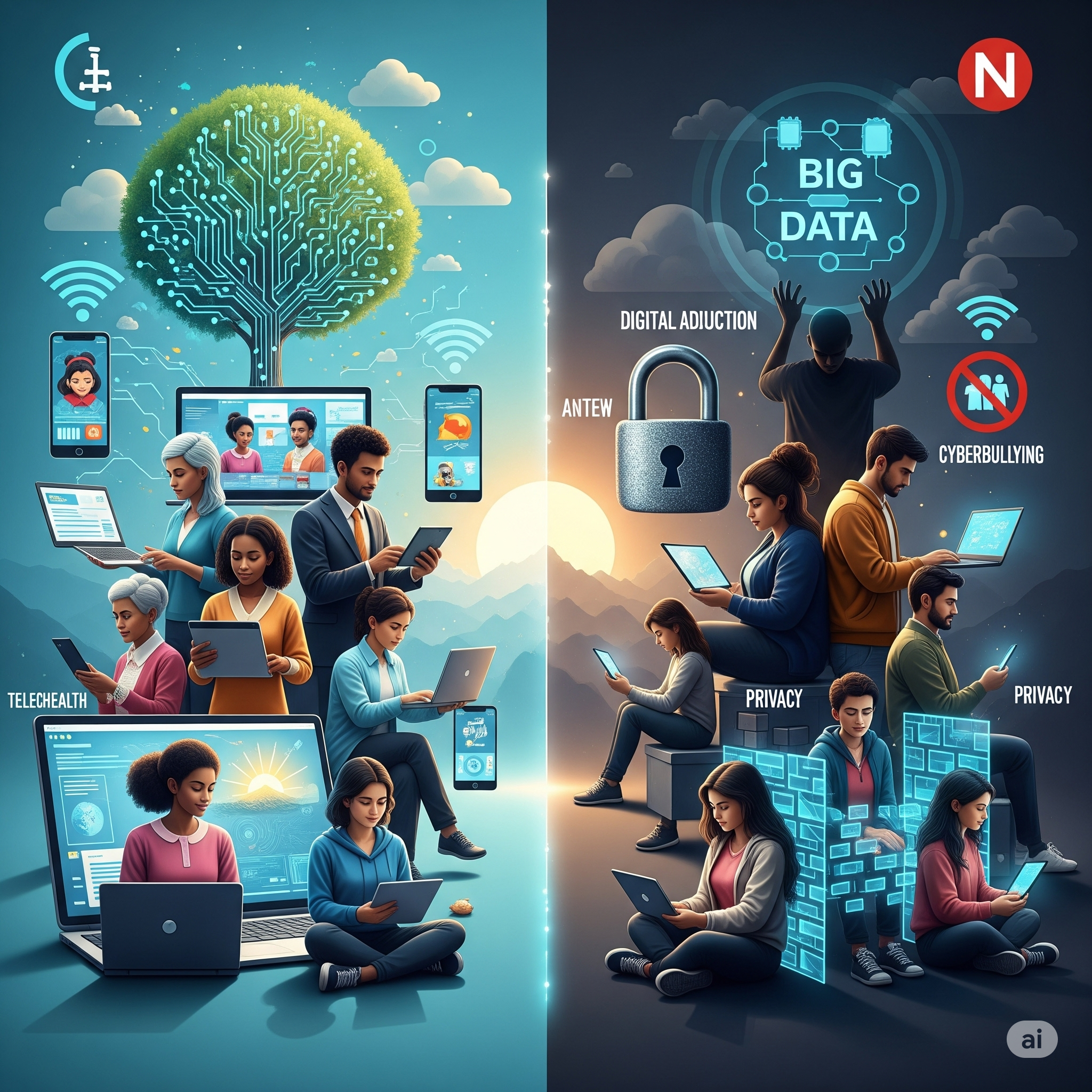
Chandana Wijekoon
Ethical issues in information and communication technology (ICT) education include the need to educate students about ethical behavior in cyberspace. The use of ICT in education can lead to problems such as plagiarism, infringement of intellectual property rights, and unethical use of computer programs or multimedia resources. It is important to address these issues by developing programs that educate students and teachers about the proper use of digital resources. In addition, there is a need to update the protocols that regulate internet behavior, especially for children and adolescents in educational communities. The goal is to establish good behavioral guidelines for students in the digital age. Overall, the ethical implications of ICT in education, the responsibilities of technology, and ensuring ethical use require attention and proactive measures. In the field of information and communication technology, ethics is considered to be the way in which professionals make decisions for professional and social behavior. There are rules that determine what is right and wrong. Ethical problems arise when a decision or activity conflicts with the moral principles of society. They can be generated by an individual or an entire organization. Legal factors are laws passed by the government. The government has issued several laws/rules specifically for the computer industry. All professionals in this industry must obey these laws. Legal problems arise when a company or individual violates the laws given by the government.
Many people today use computers and many of them are connected to the internet, which raises many problems. Information is easily accessible, and therefore it has become easy to download or copy information. This leads to problems such as plagiarism and copyright violation. Many users are worried about others misusing their computers and being able to steal their data to commit fraud. These are some of the legal and ethical issues related to the use of information and communication technologies, and teachers should have a fair and comprehensive understanding of these issues.
Copyrights
Copyright refers to what the owner can do with his/her original intellectual work and to what extent he/she has control over it. The original work is protected under copyright and therefore cannot be stolen or copied without the owner’s permission. For example, copyrights give the owner the exclusive right to reproduce the original work or to prepare derivative works from the original work and to distribute it publicly. For example, if someone wants to make a play based on your short story, you have the right to license that play, allow others to use it and get paid for it.
Plagiarism
Plagiarism is the act of copying someone else’s work without giving credit to the original creator. Plagiarism is when someone publishes the content of that original work without giving credit to the original creator. Plagiarism also applies to using a previously published idea, expression, word, image, or process as one’s own original work. It can also be considered a copyright infringement. As a teacher, you should pay attention to the following points under plagiarism.
Patent
A patent is a right granted by the government to the inventor for a new invention for 20 years. Through this permission, no one other than the inventor can use, modify, or resell the design. If any problem arises with the design, the patentee must be responsible.
Privacy
Today, computer users can access various information from various servers located around the world. Although users have their own personal computers, tools, and operating systems, when they try to access information through them, their information can be spread around the world through the network. Because of this, their information may be exposed to various organizations, and their privacy is not protected. In addition, hackers often enter people’s computer systems and access user information without permission. Some organizations also sell their users’ information and data. This also raises the issue of privacy of user information. That’s why companies should develop ethical policies that can keep their users’ information safe from hackers.
Piracy
Piracy is the creation and use of illegal copies of software. This problem is widespread in the world today. Software owners have the right to choose how the software is distributed and whether users can create copies of the software. If a developer does not allow duplication of the software, then any duplication of the software is considered piracy. The person who duplicates the software is also guilty of it. The software industry is currently facing a number of major problems with these illegal copies. The courts are also working to formulate strict laws to prevent piracy.